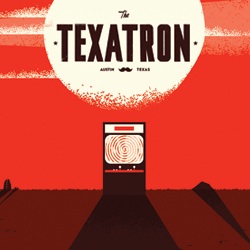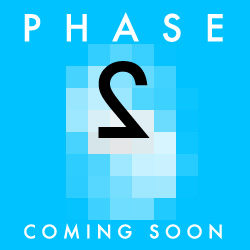RETRO EFFECT: A DAY IN THE STUDIO WITH THE MAKERS OF METROID
The North Austin office-park studios of Metroid Prime creators Retro — should you be one of the few to make it past its reception area — are a warehouse-sized web-work of narrow labyrinthine hallways, intersections temporarily roped off to ward against your catching any glimpses of current-project concept art.
Take that alongside first-hand tales of the original founders’ predilection for near military-grade security systems, and it’s not hard — if you’re actively forcing the metaphor — to picture yourself inside the very game that put them on the map, and entertain the notion, at least privately, that maybe later, with the aid of some hard-won knowledge, you’ll be able to loop back and gain access to those previously out of reach areas.
A peculiar mix of brushed steel and magenta-painted drywall, the hallways are lined with ephemera of the studios past decade of output: promotional Prime posters autographed in silver by the overseas internal team with which Retro partnered, but it’s not until you hit the complex’s cafeteria wall that the studio’s true love for the franchise that fell in their lap becomes clear. There, you’ll find a wall-sized rendering of the dread Metroid itself, just above the water-cooler refills, displayed in pixels made of hand-painted NES cartridges.
The story of Retro is the story of Metroid — though that’s not how its story began — the two are now and forever fused. With the upcoming release of Metroid Prime Trilogy, all three of the GameCube and Wii Prime games collected on a single disc, what you’re really receiving is a glimpse at a nearly a full decade of the company where I’m standing.
Talk to any of the players involved — at least, the ones that are still around, which in this case are Mike Wikan, senior designer on all three of the Prime games, and Nintendo’s SPD3 head Kensuke Tanabe, effectively the man in charge of overseeing all the Metroid franchise underneath original co-creator Yoshio Sakamoto — just how Metroid happened here, and you’ll hear the same story.
Well, more or less: Tanabe more pragmatically recalls a group of Nintendo heads — Mario creator Shigeru Miyamoto, now-president Satoru Iwata (then it not nearly as official a capacity), and second-party biz dev head Tom Prata among them — visiting the studio in 2000 to see what progress it’d made on its four internal projects (all of them original IP) and found none of them “going well.”
Conferring after the visit, it was Miyamoto, he recalls, who suddenly offered “how about Metroid?” Wikan adds that one of the projects they were currently working on was a prototyping engine to test more advanced systems for one of those four internal projects, a first person shooter, and it was from there that Nintendo decided it could easily mature that system use it for a Metroid game itself.
That’s his straight answer. The real answer is that Nintendo had just plopped “the holy grail”, a “bombshell”, in their laps (and recall, too, just how unusual it was for Nintendo at the time to entrust one of their flagship franchises, the third arm of the Mario/Zelda trifecta, to an outside studio, let alone an American one), and left them with all the “wonder and terror” that entailed.
For Tanabe, too (pictured above right at top middle, with, at bottom, from L to R: sr. director of development Bryan Walker, yr. humble iPhone-wielding narrator, IGN’s Matt Casamassina, Retro president Michael Kelbaugh, and designer Wikan), it was a project that he’d have to come to his own grips with: at the time he was placed by Miyamoto on the project, he’d never worked on a Metroid game, and had never played — let alone headed development of — a first person shooter.
That expertise, he says, he’d put entirely in Retro’s hands, but adds that his lack of experience gave him a perspective that helped make the game unique. He gives as an example: “One thing is that in many first person shooters, you don’t see yourself. You don’t know how you look. I wanted players to feel that he or she was Samus, and so we constantly emphasized the feeling of the player seeing things inside the helmet, seeing them as Samus would see things.”
That, he says, led to the idea of the different visors you use in the Prime games to interact with the world: the scan visor, for instance, set the game apart from other first person shooters in that the player was using it to proactively collect information from the world, rather than having the story come to them passively, in the form of cut-scenes or narration. “Prime could have adventure elements with the introduction of this visor,” says Tanabe, “That’s how we came up with the genre — first person adventure, instead of shooter.”
I ask Tanabe if the fact that Samus is female changed his approach to how she interacted with that world, and he reponds that while they were careful about the way they animated her, it wasn’t specifically because she was female but more that they were reticent to “simply make her feel powerful by using powerful looking or barbaric animations.”
“Through the discussions with Retro,” he says, “we came up with keyword ‘elegant’. She’s beautifully elegant, but also powerful.” Tanabe demonstrates what he means by suddenly grabbing his translator by the collar, pantomiming a hand-gun to the translator’s head, and explains that one of the scenarios they ran through with co-creator Sakamoto is how Samus would react to a Space Pirate taking someone hostage.
“What we heard from him is that she would not yell ‘hold on!’ She wouldn’t show any emotions at all, she’d just bring up her gun and hit the pirate with a head shot.” Tanabe loosens his grip on the surprisingly unfazed translator and brings his fingers in one slow sweep up to his own head, and with a verbal ‘bajoooom‘ fires dead-eye, leaning back in slow motion, his hands showing us the arc and splatter of Space Pirate viscera spilling from the cap of his skull. “She’s very calm, very professional in killing. She doesn’t show any emotions on the surface, but she’s very passionate inside her.”
I ask Wikan later to tell me, from his perspective, what the key tenets of a Metroid game are, and how you approach them as a first-timer to its universe. His list is the same that you or I would give, that “exploration is the key,” that players need to be able to “seamlessly transition through the environment, rather than navigating,” and that “all of her tools are based on that” — from the visors to her trademark double-jump (he notes that Retro spent “weeks and weeks and weeks” simply tackling how to jump on a box in first-person before they had that right).
But it’s how those tenets have evolved over time that’s more revealing about how the two studios would have to work together to achieve unity within that universe. Metroid Prime 2: Echoes, Wikan explains, was the product of an (un-spoiled here) hook that you will see on finishing the first part of the trilogy — something Wikan admits was “initially kind of a throwaway idea,” but left an opening for where they could take the second episode.
Echoes, he says, is more about exploring Samus’s character, and about the “schism between light and darkness, a world divided in half,” that would let the team “explore dark and light in same character.”
And it’s the third game, Corruption, that brought about the most internal debate. Originally, Wikan says, Prime 3 was meant to fully explore the idea of Samus as bounty hunter — to let her freely explore the galaxy around her, to take on sandbox-like missions, to put you in full control of her ship itself and find yourself on multiple planets.
That was something, he says, Retro “invested a fairly significant amount of time in”, despite internal concerns that it detracted from that other essential Metroid-ism of Samus’s essential alone-ness, but it was Tanabe that finally decided it “just wasn’t going to tie the game together,” that it was “a neat trick but not something that’s going to do we want it to do,” and so brought it down again to a more personal level with Samus’s “hyper-mode”.
The hyper-mode system would explore, as with Echoes, the idea of Samus’s light/dark struggle and potential for inner-evil, a system where entering the mode would boost her abilities, but leave her vulnerable to becoming a ‘dark Samus’ herself, if not outright dying.
Just how the idea would work caused a decent amount of tension between the two companies and specific designers within, Tanabe’s complaint that there are enough first-person games that exist solely to “make you feel strong,” and that Nintendo wanted to do something different. In the end, as you will experience in the game, Nintendo won.
If you’ve talked any number of Nintendo designers over the past several years, you’ll often hear two stories about the design insights of Shigeru Miyamoto, a playful love/hate-tattooed knuckle dichotomy, both of them just as deliberate, incisive, and brilliant. He’s a designer known for “upending the tea-table” if a project isn’t achieving a certain level of quality, but is just as often known for walking into a room and instantly solving a problem that’s left a studio in the dark for months, or instantly adding previously un-thought-of elements that entirely change a game, and nearly always for the better.
[My favorite story of the latter is an apocryphal one in which he dropped in on Creatures Inc. during the development of Pokemon and casually let slip that players should have to choose one of three starter monsters, the other two of which they’d never be able to get on their own — a design element that would instantly give the franchise its viral appeal.]
Retro will only smile without comment at a request for any stories of upended tea tables, but Wikan does recall one prime example from the early days of the development of the first Prime.
“Miyamoto and Tanabe were in our big conference room, where we were discussing how your character would move around. We’d gone through a series of assumptions and design docs, and Miyamoto could see that we were struggling,” he says.
Abruptly, he stopped the designers and asked, “What if Samus could take off her head and replace it with a bug head and bug eyes?”
You can basically still feel the resulting pregnant pause just hearing Wikan recall the tale, but, he deciphers, “What he was saying was, how you perceive your environment — that’s the whole path, how Samus interacts with her environment.”
Senior dev director Bryan Walker interjects with what seems like the most apt metaphor to Miyamoto and Nintendo’s approach to game design: “Their feedback is often the last five syllables of a haiku, the ‘it’ in the what is ‘it’ that we need to tie together. They come with the last line and the elegant solution manifests itself.”
It’s Walker and Retro president Michael Kelbaugh’s presence at Retro today — Walker an EA vet coming from games like Ultima Online, and Kelbaugh a long-time Nintendo vet (long-time as in, you should hear the stories he’s got about setting up tradeshow booths in the Super Nintendo days) — that’s another last line to a solved problem, much of Retro’s original staff and management now having moved on. There are toe-curling stories of just how fraught and shoe-strung development of the first Prime was, tongue-in-cheek anecdotes of Kelbaugh and Walker needing to explain to the team on their arrival just what exactly this “schedule” thing was and what it represented, but when we actually get to the heart of the visit, the games themselves, all of that disappears.
Especially coming back and playing the original Metroid Prime some seven years later, now bolstered by the collection’s new Wii-mote controls, you’ve forgotten (if you haven’t returned since then) just how aptly it really did capture that desolate, lonely, exploratory essence of the franchise.
And Retro are keen to note that the games included on the Trilogy disc aren’t quick ports slapped on and shipped to print: all of the games have undergone re-balancing and polishing, especially on Echoes, which the developer freely admits may have erred on the side of too challenging when trying to up the difficulty from the original Prime, for more core players.
And as we’re led through some of the series’ biggest set-piece battles you can see new strategies already unfolding in ways its WaveBird control scheme wouldn’t allow: locking on to an enemy and still having the option to freely shoot another nearby, simultaneously firing missiles and standard shots, and Echoes‘ massive Quadraxis boss (the pride of Wikan’s cross-episode work) now much more manageable with the greater vertical freedom the Wii-mote’s free-look allows.
It does exactly what it should: it makes you want to re-experience all three games again for the first time, and it gave Retro the almost unheard of opportunity to revist a decade’s worth of work. There are niggling wishes that Echoes could’ve shipped with more robust online multiplayer capabilities — Kelbaugh says that they “held firm that we wouldn’t chase the plethora of multiplayer products out of the time, and I’m happy we didn’t in that regard. We took a bath in that it was entry level, but at least nobody compared us to anything else” — but overall, the team is as surprised as anyone at its durability.
Says Wikan, “I can’t believe we pulled it off, looking back at how well it holds up today. It shocks me that it holds up today. I think there are things we could have done smarter — really just production concerns — but as far as the actual construction I wouldn’t change a darn thing. Through all the blood, sweat and happy accidents, it came out as good as any studio could have executed it.”
See more posts about: Metroid, Offworld Originals






